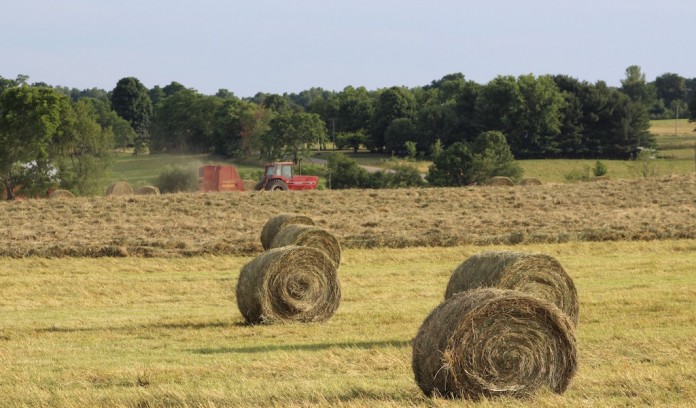SALEM, Ohio — If you talk to farmers at the town coffee shop, the local feed mill, the livestock auction — or about any other place — you’ll find they’re a little pessimistic about where the ag economy is headed.
And now there’s statistical evidence that shows their concern is more than talk.
The Ag Economy Barometer, a survey of 400 U.S. farmers by Purdue University, measures producer sentiment toward current and future expectations. The Nov. 3 release of data resulted in the second most pessimistic results since the survey began in October 2015.
Financial concerns
The number of farmers reporting that they expect bad times financially over the next 12 months rose to 79 percent in October, an increase of 11 percentage points from the September survey and 16 percentage points from October 2015.
Results from the survey were released during a webinar hosted by James Mintert, professor and director for Purdue’s Center for Commercial Agriculture, and Michael Langemeier, professor and associate director.
Crop futures
On the crop side, only a third of producers said they expect July corn futures to top $4 a bushel, with about the same percent believing they’ll see corn prices below $3 a bushel. Some 30 percent predict soybeans will exceed $10 a bushel, and 25 percent expect soybeans at below $8 a bushel.
Yields this year were fairly strong across the nation, although some farmers suffered a regional drought. Meanwhile, commodity prices remain low, and most inputs are still high.
“I can see why there’s a little bit of pessimism when (farmers) start looking forward,” Langemeier said.
Related: Good game plan a must for 2017.
Even the experts, or what the survey calls “ag thought leaders,” are concerned. About 100 thought leaders, including agribusiness executives, commodity leaders and academia, were also surveyed.
About 30 percent of thought leaders thought corn would exceed $4 a bushel, but a much lower percent of thought leaders (13 percent) compared to farmers saw corn going below $3 a bushel. Also, about 40 percent of thought leaders saw soybean prices topping $10 a bushel, also a higher trend than with farmers.
However, fewer thought leaders than producers expect higher commodity prices to improve producers’ financial conditions.
One-fourth of farmer respondents expect higher grain and livestock prices to improve financial conditions over the next 12 months, compared to just 8 percent of thought leaders.
Livestock industry
It’s not just grain farmers who are hurting. Beef, swine and dairy producers are also under a lot of pressure to be profitable — even with cheaper feed costs.
“All of the industries that are represented by the people we’re surveying are seeing tougher times,” Langemeier said. “This probably going to stay this way for a while.”
A couple years ago, livestock prices were at an all-time high and milk was also much higher. The strong demand brought about a rapid increase in supply — and sent prices tumbling.
“Expansion showed up more quickly than the industry was expecting,” Mintert said. “We’ve really changed the situation pretty dramatically.”
As farmers hope for better prices, they’re also making management decisions and cutting back. Nearly half of farmers said they will be reducing fertilizer rates for 2017, with about 20 percent planning a lower seeding rate, and about 35 percent planning to adjust seed hybrids, or their variety trait package.
Mintert said farmers are looking at almost everything, to find ways to reduce cost.
”They’re looking for ways to reduce cost in an expectation that they’re going to have to find ways to deal with this lower price environment, as opposed to just waiting for prices to recover.”











Is there any evidence that this survey has any predictive value ? The fact that everyone is optimitic or pessimistic may not be correlated with what actuually happens.